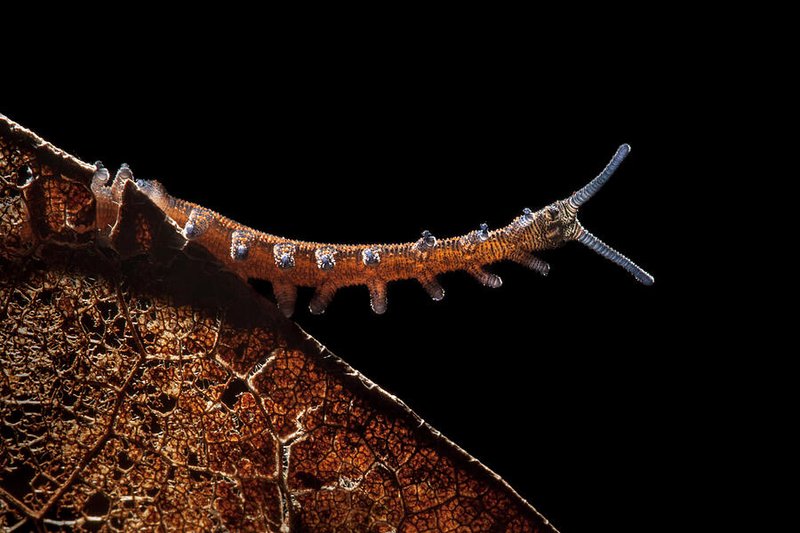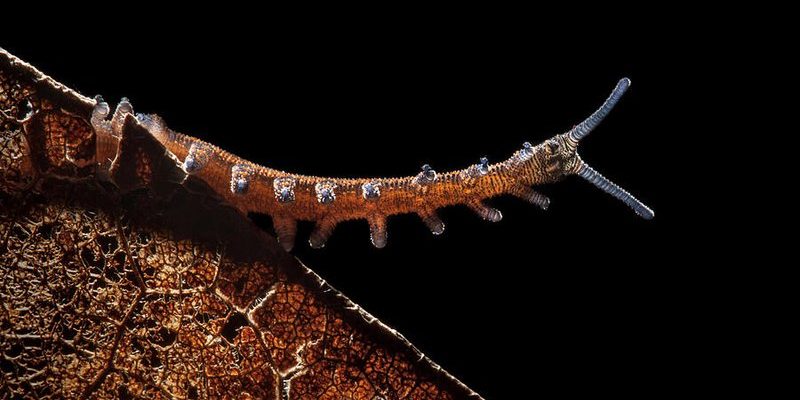
Imagine walking into a forest and spotting a creature with an elongated body, tiny legs, and a soft, velvety texture. It might not seem like much, but velvet worms are captivating in their own right. They provide a unique glimpse into evolution and how life has changed through the ages. Let’s dive deeper into these extraordinary animals and discover what makes them both intriguing and vital to our understanding of the natural world.
What Are Velvet Worms?
In simple terms, velvet worms belong to the phylum Onychophora, a group of soft-bodied, segmented animals. They have a worm-like shape, which is why they are often mistaken for earthworms or caterpillars. However, they are neither. With around 200 known species, velvet worms typically inhabit humid environments like tropical forests, where they can be found hiding under leaves or rocks.
These unique creatures have a few standout features that set them apart. For starters, they possess small, stubby legs—usually 14 to 43 pairs—at the front and rear of their bodies. This means they can crawl around with a bit of a lumbering gait. But here’s where it gets really interesting: velvet worms are known for their ability to shoot a sticky, gooey substance to capture prey, like insects. It’s a bit like a superhero’s web-shooting skills, but less flashy and more practical.
The Evolutionary Significance of Velvet Worms
Velvet worms are often described as “living fossils” because they have remained largely unchanged for millions of years. Their structure and way of life provide scientists with insight into the evolutionary history of life on Earth. If you think about it, that’s pretty remarkable. They serve as a bridge connecting modern arthropods, such as insects and spiders, back to their ancient ancestors.
One way to understand their significance is by looking at their anatomy. Velvet worms have a combination of characteristics found in both annelids (like earthworms) and arthropods (like crabs and insects). This means that they hold valuable clues about how these two groups diverged from a common ancestor. By studying their genetic makeup, researchers can better understand the evolutionary processes that led to the incredible diversity of life we see today.
Where Do Velvet Worms Live?
You might wonder where you can find these elusive creatures. Velvet worms primarily thrive in humid, sheltered environments. Think about lush rainforests, damp soil, and dark, decaying leaf litter—places where moisture is abundant. They prefer to stay out of the harsh light and are most active during the night when they come out to hunt.
Regions like Central and South America, New Zealand, and parts of Africa are home to many species of velvet worms. In fact, New Zealand has an impressive variety of these creatures. The wet and moist atmosphere helps them maintain their delicate bodies and keeps them safe from predators.
Because they are so sensitive to changes in their environment, velvet worms also serve as important indicators of ecological health. A decline in their population could signal issues like habitat loss or climate change, reminding us of how interconnected our ecosystems are.
How Velvet Worms Capture Their Prey
Velvet worms have a unique way of catching food that’s both clever and effective. Instead of a traditional hunting method, they use a sticky slime. When hunting, they can shoot this slimy substance out of special glands located on their heads. This goo can extend several inches, making it perfect for capturing unsuspecting insects.
Imagine a spider spinning its web, but instead of strands, you have a gooey line of slime that traps its prey. Once the insect is ensnared, the velvet worm slowly makes its way toward it. They possess sharp jaws that can pierce the exoskeleton of their catch, allowing them to feast on the soft insides. It’s a fascinating hunting strategy that showcases their evolutionary adaptations.
Reproduction: A Unique Approach
When it comes to reproducing, velvet worms have a few different strategies. Some species lay eggs, while others give birth to live young. It’s a bit like a mixed bag! For those that lay eggs, the mother often guards the eggs until they hatch, showcasing a nurturing side not commonly seen in many invertebrates.
For live-bearing species, the young ones are born as miniature versions of adults. They don’t go through larval stages like many insects, which simplifies their development. Isn’t it wild to imagine those tiny worms crawling out in search of food almost immediately?
This reproductive flexibility could be a reason why velvet worms have managed to survive for so long, adapting to changing environments while maintaining their unique characteristics.
Why Velvet Worms Matter
You’re probably wondering why we should care about these little creatures. Velvet worms play a critical role in their ecosystems as both predators and prey. They help maintain the balance in their habitats by controlling insect populations. Plus, as I mentioned earlier, they are indicators of environmental health, meaning their presence (or absence) can tell us a lot about the state of their surroundings.
Studying velvet worms also aids scientific research. Their unique attributes provide insights into evolution, adaptation, and the complexities of life on Earth. They remind us of our planet’s rich history and the importance of conserving biodiversity. By protecting their habitats, we’re also preserving a piece of our evolutionary story.
Conservation Efforts
Given their ecological significance, velvet worms face threats from habitat loss and climate change. Deforestation, pollution, and urban development disrupt their natural environments, putting their populations at risk. As tree cover diminishes, these fascinating creatures lose both their homes and their food sources.
Conservation efforts are essential for their survival. Research plays a crucial role in understanding their needs and habitat requirements. Organizations dedicated to preserving biodiversity are working hard to protect the lush environments that velvet worms call home.
You might wonder how you can contribute to these efforts. Supporting conservation programs, reducing plastic waste, and advocating for sustainable practices can all make a difference. Every little bit helps!
As you can see, velvet worms may seem like simple creatures, but they carry a wealth of information about evolution and our planet’s history. By understanding and appreciating them, we can take steps to protect not just these amazing animals but the intricate web of life they represent.
In conclusion, velvet worms might not be the most glamorous creatures on the planet, but their story is one worth telling. They open a window into a past where life was simpler and remind us of the importance of preserving our natural world. So next time you hear about these “living fossils,” remember they are more than just quirky animals; they are crucial players in the ongoing story of life on Earth.

